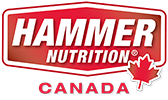BY BRIAN FRANK
IF YOU REGULARLY EXERCISE FOR 3 HOURS OR MORE, THIS ARTICLE IS FOR YOU!
For decades now, I have been haunted by one recurring question from clients; which of your products will allow me to consume the most calories per hour? While I understand the reasoning behind the question, it's necessary for a complete paradigm shift to a question at the other end of the spectrum; What amount is the FEWEST calories per hour I can consume without slowing me down? And, why would anyone want to consume more than this glorious minimum while exercising? These are questions worth asking and the purpose of this article.
I first became sensitized to this question when I introduced our first "sports drink" in 1991, which I poorly named "Energy Surge," but subsequently changed to Sustained Energy. This product represented a significant departure from all previous and existent products on the market with unique features such as 1) no added sugar, 2) no added flavoring, 3) three sources of complex carbohydrates, and 4) a protein component. This radical departure from the sugar/salt/citric acid-based products of the day proved to be a godsend to ultra runners, cyclists, Iron distance triathletes, and every other athlete wanting to exercise for more than 3 hours.
However, it also gave false hope to many athletes who reckoned that they'd be able to come closer to replacing calories burned on a 1:1 basis. At the time, they were told by ignorant experts that their goal while exercising should be to replace what they are burning to avoid "bonking." In addition, 400-600 calories per hour was the recommended (but entirely unattainable) supposed goal.
To make matters worse, dieticians of the day recommended a "fat-phobic" diet that encouraged massive carb consumption and protein avoidance for fear of becoming a muscle-bound gorilla. Unfortunately, this type of diet completely inhibited our body's ability to burn fat and forced it to rely only on glycogen and muscle (protein) for fuels. However, we know that an athlete can get 60% or more of their calories from our massive fat supply.
Still, yet another variable that most failed to consider was how many calories per minute or hour our poor overworked liver can convert into glycogen. We now know that one gram per minute is the maximum the liver can produce, giving a theoretical maximum calorie intake of 240 per hour (4 calories per gram, 60 minutes in an hour).
(Side note: anyone who claims that you can "train" your liver to process more than 60 grams per hour is a complete ignoramus, or is trying to sell something, or more likely both.)
Ok, the idea here is to consider 240 calories per hour as the maximum and seek to reduce from there to a minimum level of intake that does not reduce power output. Today, we have watt meters, and heart rate monitors to facilitate this process. By using one of these tools, or just good old perceived effort/pace, you should be able to pair this number down to somewhere around 120-200 calories per hour, depending on your body size.
For example, I weigh 160 pounds, and my OHCI is between 130-150 calories. I can comfortably increase that to 180-200 calories per hour, but there is no gain in pace! So, why would I consume those extra 50-80 calories per hour? It won't get me across the finish line any quicker!
In closing, I will say that experimenting to determine your own Optimum Hourly Caloric Intake (OHCI) and then using that for all of your endurance training should be your primary goal for 2022! Once you have this number locked in, it makes your life a lot easier and eliminates one of the biggest variables and issues central to maximizing your endurance success.

